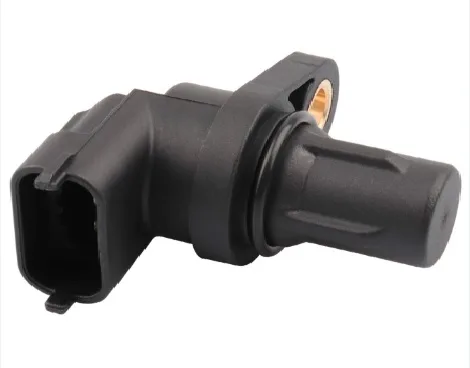Camshaft position sensors might seem like small components, but their impact on the performance of modern engines is anything but minor. As engines have evolved to become more efficient and sophisticated, the need for precise timing and control has become paramount. This is where camshaft position sensors come into play, providing crucial data that ensures optimal engine operation.
Table of Contents
Understanding Camshaft Position Sensors
At the heart of it, camshaft position sensors are responsible for monitoring the position of the camshaft within an engine. The camshaft plays a pivotal role in dictating the timing of the engine’s intake and exhaust valves. This precise timing is essential for efficient combustion and power generation. Camshaft position sensors help the engine control module (ECM) determine the camshaft’s position in real-time, enabling the ECM to adjust fuel injection and ignition timing accordingly.
Types of Camshaft Position Sensors
There isn’t a one-size-fits-all approach to camshaft position sensors. There are primarily three types: Hall Effect sensors, Magnetic sensors, and Optical sensors. Hall Effect sensors use the Hall Effect phenomenon to detect magnetic fields and convert them into voltage changes. Magnetic sensors rely on magnetism to generate electrical signals, while Optical sensors use light to determine the camshaft’s position. Each type has its advantages and limitations, catering to different engine requirements.
How Camshaft Position Sensors Work
To truly grasp the significance of camshaft position sensors, it’s essential to understand how they work. These sensors are strategically placed near the camshaft, often utilizing teethed wheels or slotted discs attached to the camshaft itself. As these teeth or slots pass by the sensor, they cause interruptions in the magnetic field or light beam, generating voltage fluctuations. The ECM interprets these fluctuations to determine the camshaft’s position and adjust engine operations accordingly.
Signs of a Failing Sensor
Detecting a failing camshaft position sensor early is crucial to prevent serious engine issues. Symptoms of a malfunctioning sensor can vary from rough idling and stalling to difficulty starting the engine. Poor acceleration and decreased fuel efficiency are also common signs. If you notice any of these symptoms, it’s advisable to address the issue promptly to avoid further damage to the engine.
Diagnostic Techniques
When faced with potential sensor issues, diagnostic techniques can provide valuable insights. OBD-II scanners, readily available for both professionals and enthusiasts, can read error codes and provide information about sensor performance. Additionally, bench testing involves removing the sensor and manually checking its output using a multimeter. These techniques help pinpoint the problem accurately.
Replacing Camshaft Position Sensors
If diagnostics confirm a faulty sensor, replacement is the next step. While some might opt for professional assistance, replacing the sensor yourself is possible with the right tools and knowledge. Begin by disconnecting the battery and locating the sensor. Carefully remove any components obstructing access, then detach the sensor, making note of its orientation. Installing the new sensor is the reverse process, ensuring proper alignment and secure attachment.
Importance for Engine Performance
The intricate dance between camshaft position sensors and engine performance cannot be understated. These sensors play a pivotal role in determining the engine’s power output, fuel efficiency, and emissions. By accurately detecting the camshaft’s position, the ECM can optimize combustion timing and fuel injection. This precision results in smoother operation, better acceleration, and reduced exhaust emissions.
Integration with Engine Control
Camshaft position sensors are integral to modern engine control systems. They provide the ECM with real-time data, allowing it to make split-second decisions to optimize engine performance. By precisely timing the opening and closing of valves, these sensors contribute to efficient fuel combustion and power delivery. As a result, the vehicle achieves better overall performance and improved fuel economy.
Maintenance and Care
Ensuring the longevity of position sensors requires proper maintenance. Regular engine inspections and tune-ups play a crucial role in identifying and addressing sensor issues. Keeping the sensor and its surrounding components clean from dirt and debris is also essential. Clean sensors provide accurate readings, contributing to consistent engine performance.
Advancements in Sensor Technology
The automotive industry is in a constant state of innovation, and camshaft position sensors are no exception. Recent advancements have led to sensors with enhanced precision, durability, and compatibility with various engine types. These sensors are designed to withstand harsh conditions and provide accurate readings, contributing to the longevity and efficiency of modern engines.
Camshaft Position Sensors in Modern Vehicles
Camshaft position sensors are present in a wide range of vehicles, from compact cars to heavy-duty trucks. Their role extends beyond traditional combustion engines; they also integrate with advanced driver assistance systems (ADAS). By providing accurate data about the camshaft’s position, these sensors contribute to the functionality of ADAS features such as adaptive cruise control and automatic emergency braking.
Frequently Asked Questions
- What is a camshaft position sensor, and why is it important? Camshaft position sensors monitor the camshaft’s position in the engine, allowing the ECM to optimize combustion and power delivery for improved performance.
- How can I tell if my camshaft position sensor is failing? Look for symptoms like rough idling, stalling, poor acceleration, and difficulty starting the engine.
- Can I replace the sensor myself, or should I consult a professional? If you have the necessary tools and knowledge, you can replace it yourself. Otherwise, professional assistance is recommended.
- Are sensors standardized across different vehicles? While the concept is similar, the specific sensors can vary depending on the vehicle’s make and model.
- How do advancements in sensor technology benefit vehicle performance? Advanced sensors offer increased accuracy and durability, leading to better engine performance and efficiency.
Conclusion
In the intricate realm of modern engines, sensors are the unsung heroes ensuring optimal performance. From enabling precise combustion timing to integrating with advanced driver assistance systems, these sensors have revolutionized the way engines operate. Understanding their role and significance sheds light on the complexity and sophistication that drive our vehicles forward.

